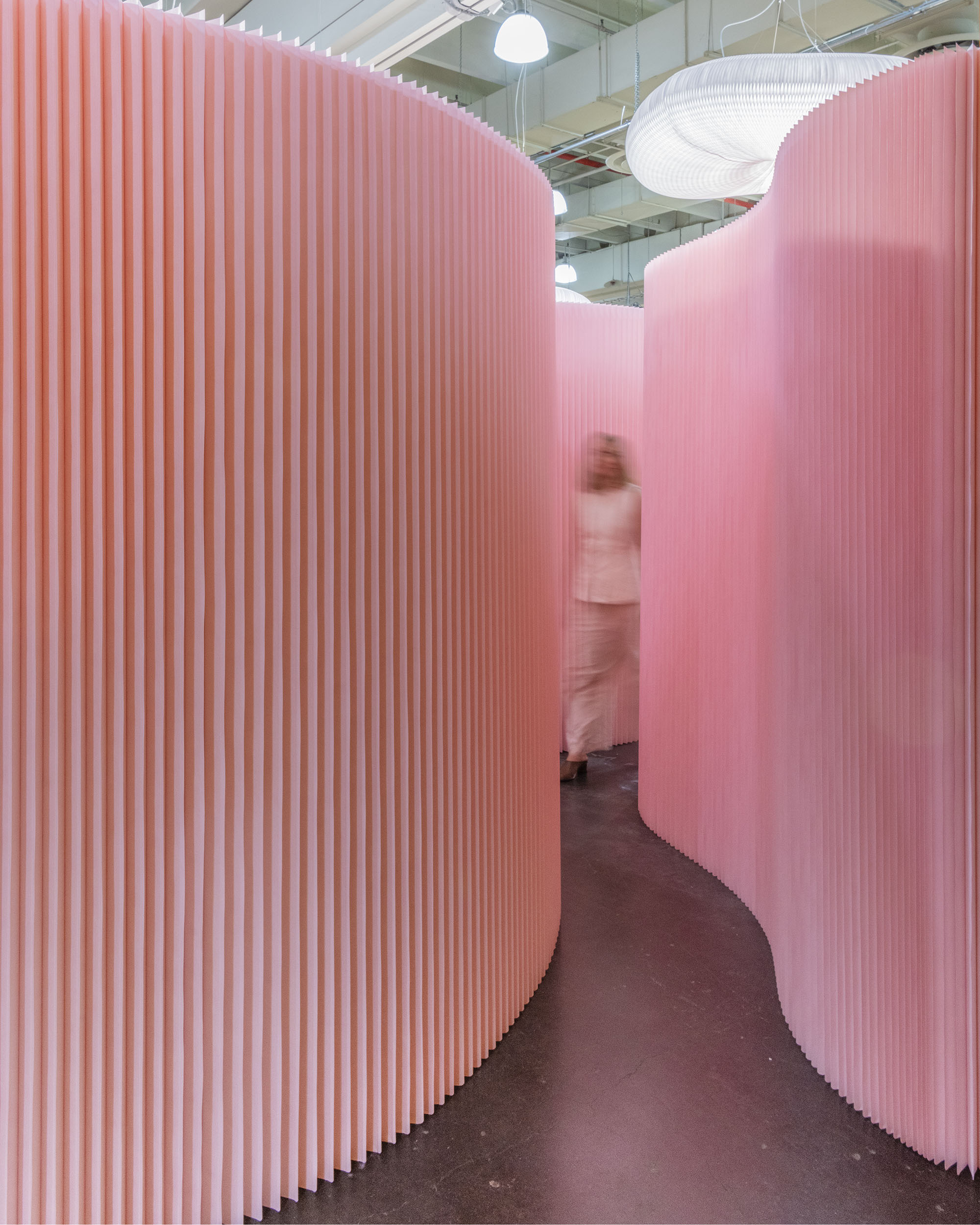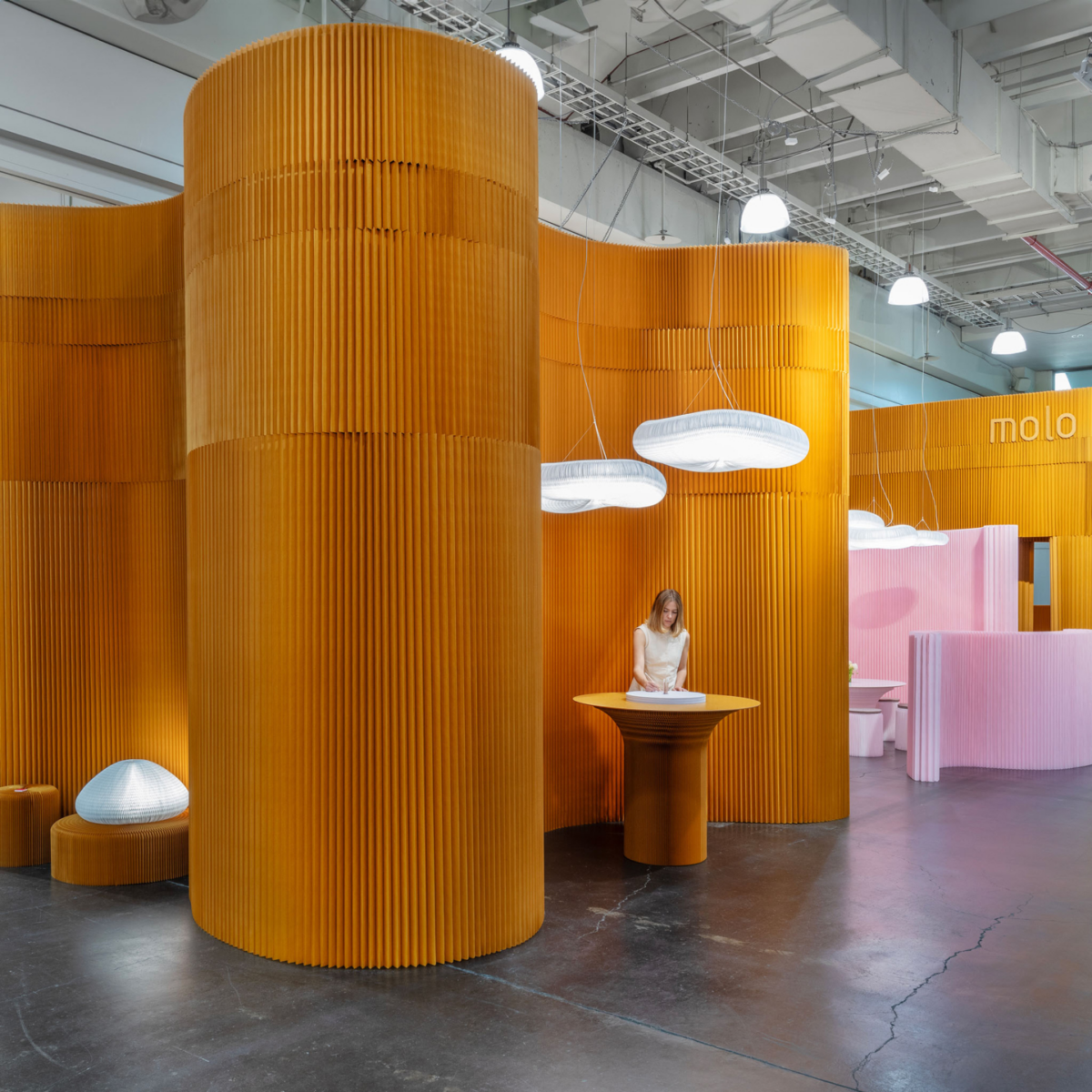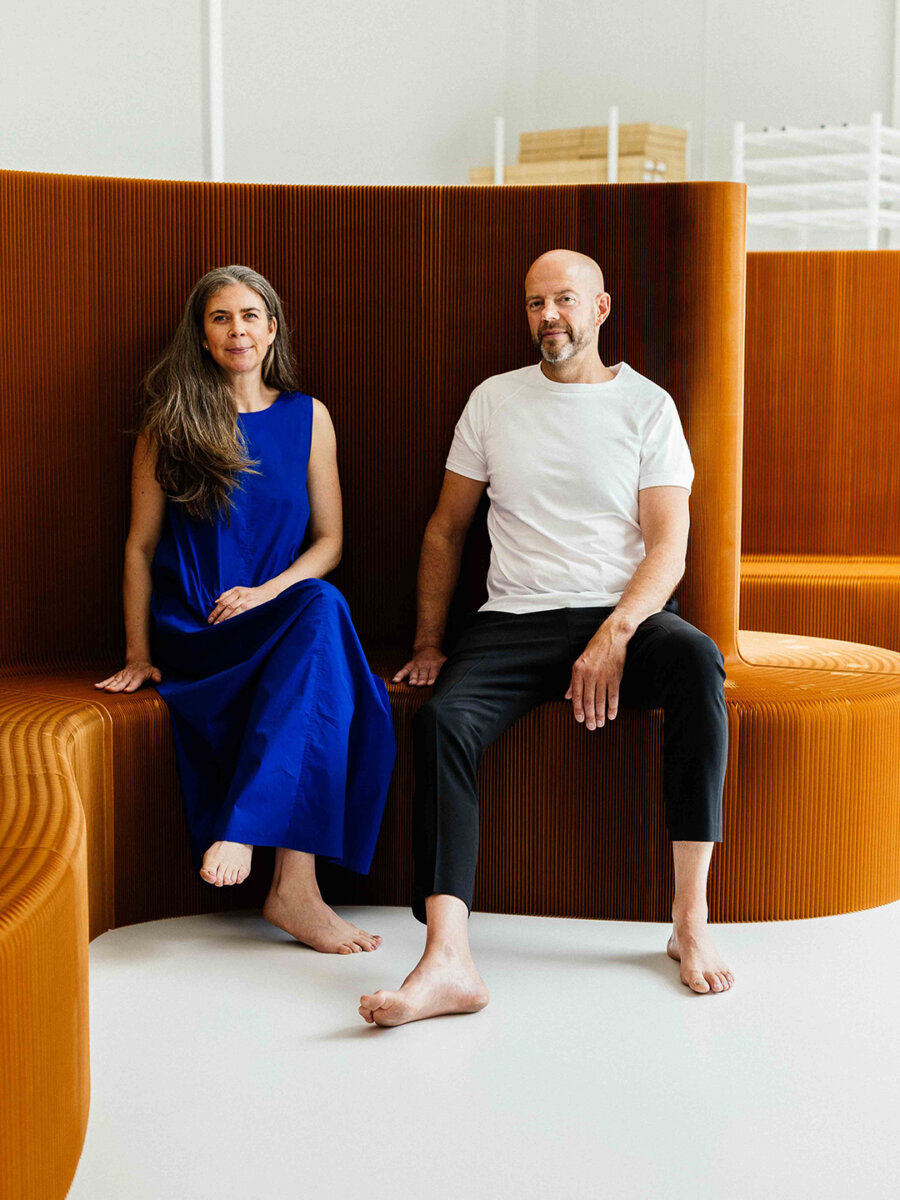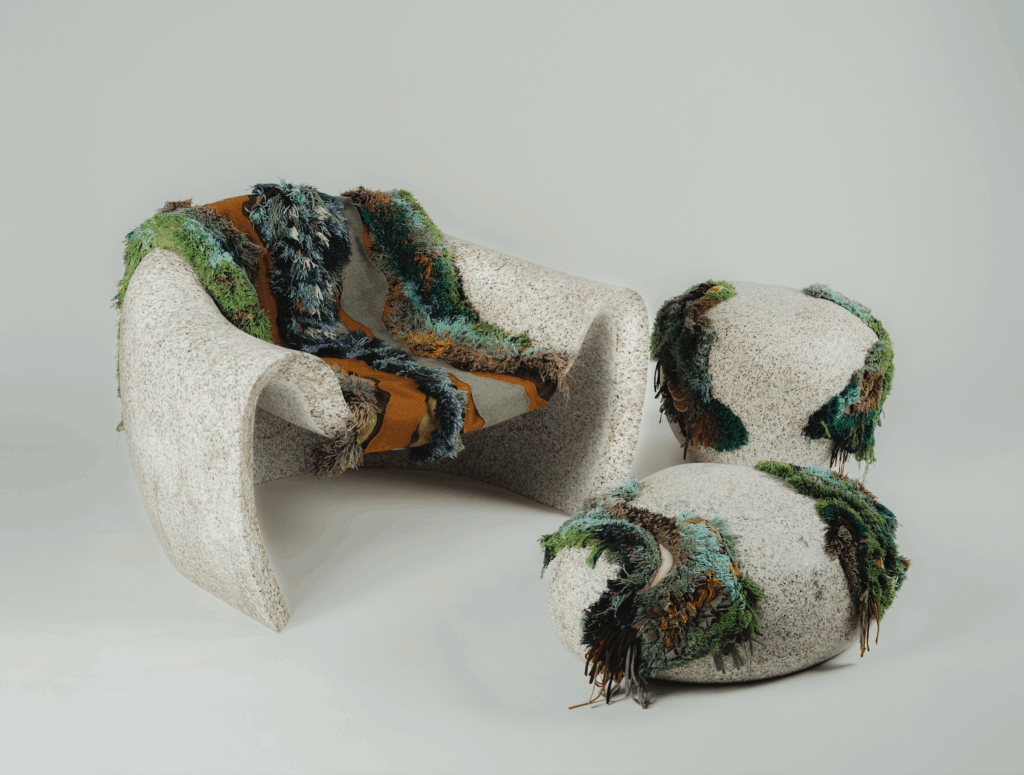
While many brands participate in the International Contemporary Furniture Fair (ICFF) year after year, some have been regulars for so long that they’re as much family as exhibitors. Case in point: molo.
Company founders Stephanie Forsythe and Todd MacAllen first showed at the Fair in 2004. Then, they debuted their paper softwalls as well as float tea lantern, the latter an award-winning design made with double walls of glass. Two decades on, the pair are still unveiling innovations at the Fair.

Molo at ICFF 2024; pieces pictured include the cantilever table and softwall and softblock acoustic room dividers. Credit: Mikhail Mishin
For ICFF 2024, the Vancouver, Canada-based company created an installation using a custom textile version of its flexible softwall. Light reflected between the pleats of the softwall’s petal-pink surface, shifting and deepening the hues. A curling line of benchwall high-back seating snaked around the front of molo’s space; serving as a visual partition, the product also offered acoustic mitigation and a comfortable place to rest. Cloud softlight pendants hovered above the furnishings while urchin softlight lamps glowed at ground level. Molo’s float wares were back, this time accompanied by large, hand-blown glass vessels for plants.
Molo won four honors at the Fair for its efforts, including the ICFF Editors Award for Best Exhibit Design. Other plaudits included the ASID Award for Best Booth and two NKBA | KBIS Inspire Awards, for Best Booth Design and Best Seating.

Molo at ICFF 2024, with the benchwall seating in the foreground and cloud mast lighting behind it. Photo: Mikhail Mishin
Forsythe and MacAllen say they have been drawn to paper and glass since their days as architecture students. “There is something magical in the potential of a humble blank piece of paper,” they explain. “It can become almost anything—a song, a poem, a building.”
They began modeling with paper in architecture school, reveling in its sculptural qualities. Along the way, Forsythe also studied glass casting and blowing, taking cues from labware.
After a few architecture jobs, the pair sold their tools to pay off their student loans and returned to paper. “At that time, we were thinking about less conventional and more flexible, sustainable forms of space-making,” they explain. At first, they made small models. But as the models grew in scale, paper shifted from modeling to building material.
“We began to see its potential structurally,” they say of the medium. “And we fell in love with how it absorbs and emits light and sound.”
They also were attracted to the material’s sustainability. The softwall, for example, is 99% air when fully expanded, meaning it can be compacted for shipping and storing. Derived from FSC-certified wood, it is a single-material product, making it easier to assemble and recycle at the end of its useful life. Sections of it also can be removed and replaced as needed.
Forsythe and MacAllen use ICFF to develop their work, noting how the format—which can accommodate large installations and small vignettes—allows visitors to experience their pieces with all of their senses. “We make things that are meant to be touched and spaces that are to be visually and acoustically calming,” they say. “Being at [ICFF] gives us the opportunity to interact directly with people as they interact with our products.”
Follow @studio_molo on IG




